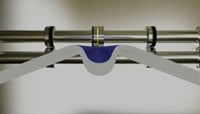kdw75
Well-known member
We run about 30% of our volume on 100# Dull Text. If we try to crease and fold parallel to the grain it cracks and even splits sometimes, but if we crease and fold perpendicular to the grain, it looks beautiful.
I was reading a website the other day about grain and it was saying just the opposite and that you should fold WITH the grain.
Can anyone shed any light on this? Unless all the skids we get are mis-marked, I don't understand why this is.
I was reading a website the other day about grain and it was saying just the opposite and that you should fold WITH the grain.
Can anyone shed any light on this? Unless all the skids we get are mis-marked, I don't understand why this is.













